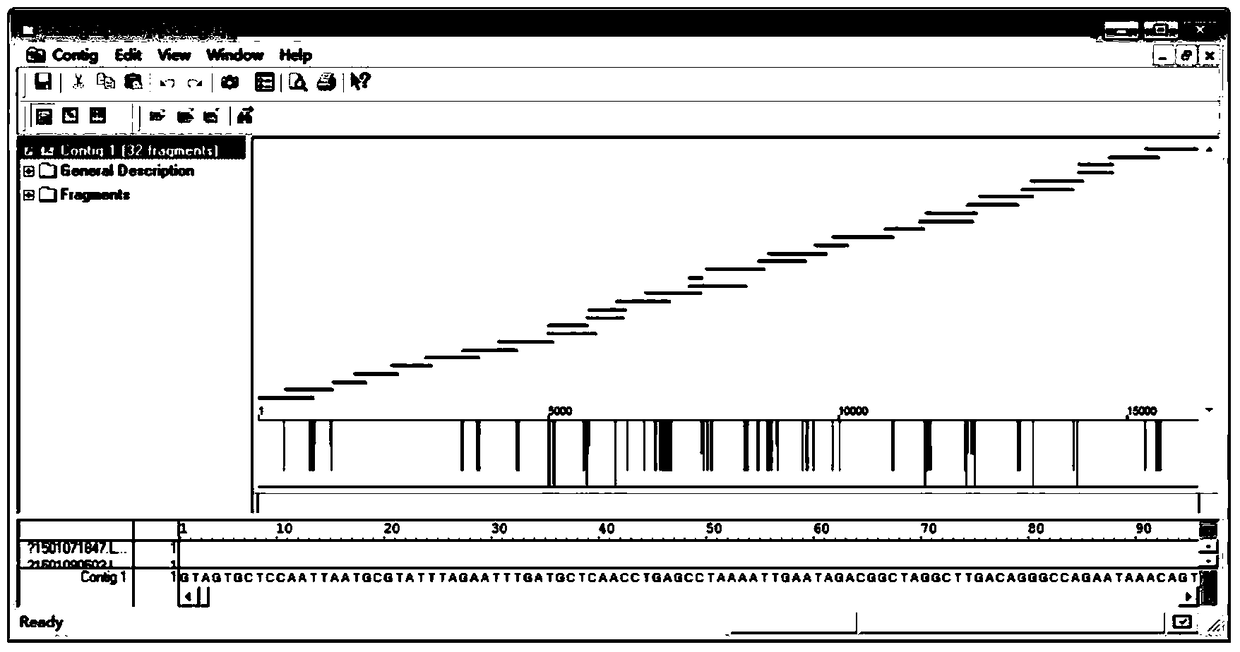A Sanger-based method for sequencing the human mitochondrial genome
A technology of human mitochondria and genome, applied in the field of genetic engineering, can solve problems such as cumbersome operation, nuclear DNA pollution, increased sequencing workload, etc., and achieve the effect of avoiding the experimental operation process and reducing the amount of data
- Summary
- Abstract
- Description
- Claims
- Application Information
AI Technical Summary
Problems solved by technology
Method used
Image
Examples
Embodiment
[0026] This embodiment relates to a method for sequencing the human mitochondrial genome based on Sanger; specifically, it includes the following steps:
[0027] 1. Genome extraction: extraction of human total DNA
[0028] 1. Take 1-20 mg of animal tissue, transfer it into a mortar pre-cooled in an ice-water bath, and quickly and vigorously grind it into a homogenate.
[0029] 2. After adding 350 μl Buffer PBS and 0.9 μl RNase A, grind gently for 30 seconds.
[0030] 3. Collect 350 μl of ground tissue homogenate and transfer to a 2ml centrifuge tube. If the homogenate volume is less than 350 μl, add PBS to 350 μl.
[0031] 4. Add 150 μl Buffer C-L and 20 μl Proteinase K. Immediately vortex for 1 min to mix well. After brief centrifugation, place the centrifuge tube in a 56°C water bath for 10 minutes.
[0032] *Do not add Proteinase K directly to Buffer C-L.
[0033] 5. Add 350μl Buffer P-D, vortex for 30s to mix well, and centrifuge at 12,000×g for 10min.
[0034] 6. P...
PUM
 Login to View More
Login to View More Abstract
Description
Claims
Application Information
 Login to View More
Login to View More - R&D
- Intellectual Property
- Life Sciences
- Materials
- Tech Scout
- Unparalleled Data Quality
- Higher Quality Content
- 60% Fewer Hallucinations
Browse by: Latest US Patents, China's latest patents, Technical Efficacy Thesaurus, Application Domain, Technology Topic, Popular Technical Reports.
© 2025 PatSnap. All rights reserved.Legal|Privacy policy|Modern Slavery Act Transparency Statement|Sitemap|About US| Contact US: help@patsnap.com



